In1975, the United Nations General Assembly declared March 8 International Woman’s Day “to recognize the fact that securing peace and social progress and the full enjoyment of human rights and fundamental freedoms requires the active participation, equality, and development of women; and to acknowledge the contribution of women to the strengthening of international peace and security.” Sonia Delaunay was commissioned by UNESCO to design the official poster. The United States sets aside one day for the celebration, but the subject of Delaunay’s French poster was International Year of the Woman.
Sonia Delaunay (1885-1979), born in Odessa, Ukraine, was from a well-to-do Jewish family. Her uncle Henri Terk was a lawyer in St Petersburg and Sonia went there to live with the Terk family when she was five. She received a quality education in St Petersburg, including the languages French, English, and German. She traveled, visited museums, and discovered art. By age fourteen her talent was recognized, and she attended the Academy of Fine Arts in Karlsruhe, Germany. She went to Paris in1905 to study at the Académie de la Palette on Montparnasse. However, she preferred the galleries and the new art to the Classic style. She was influenced by the paintings of Matisse, Gauguin, and Van Gogh, and she met Kandinsky and other Russian artists in Paris.
Delaunay’s first solo exhibition was at the William Uhde Gallery in Paris in 1909. Uhde was a German art critic and art dealer. She and Uhde were married in December 1909. It was as a marriage of convenience for both: her parents wanted her to come home, and Uhde was gay. That same year Sonia met Robert Delaunay and fell in love. She and Uhde divorced amicably after one year of marriage. Uhde said, “A friend of mine felt he could make my wife more perfectly happy than I could.”
Sonia said, “In Robert Delaunay I found a poet. A poet who wrote not with words but with colors.” Together they developed a new artistic style they named Simultanism, based on Cherveul’s scientific discovery that light was composed of the six colors of the rainbow. The Delaunays preferred to use the colors of light when painting an object rather than the browns and grays of Cubism. “Le Bal Bullier” (1913) (oil on mattress fabric) (38” x 132.5’’) depicts customers dancing in the popular Montparnasse nightclub to the new favorite, the tango. The tango originated in a sailors’ bar in Argentina, and the intensity of the dance and the erotic moves of partners in a tight embrace became all the rage. The Delaunays were frequent customers.
Sonia captures the simultaneous excitement and energy of the tango with intense colors that form various shapes moving across the dance floor. Some couples hold each other tight and move their hips in matched rhythms. Others sway and swirl to the pulsing of the music. The viewer is drawn into the passion and spirit of the dance.
“Electric Prisms” (1914) (94”x 99”) was inspired by the electric streetlights on Paris boulevards. The canvas is composed of two major centers of light radiating and overlapping in a multitude of colors. Robert Delaunay described Sonia’s style as intuitive: “Sonia created her harmonies and rhythms of color from life itself, from color she invented with the brush in the manner of color poems.” Their good friend Guillaume Apollinaire, considered to be a major poet, playwright, novelist, and art critic of the early 20th Century, called their art Orphism. Orpheus was the legendary Greek musician renowned for his musical skills that allowed him to charm the three headed dog Cerberus and enter Hades. Apollinaire commented, ”Upon waking, the D’s talk color.” Sonia decorated everything in their apartment as she said, “to make homes live able, bodies alive…it can be the dress of books, the skin of objects, the harlequin driving away ugliness…we have liberated color, which has become a value in itself.” The Delaunays’ “Electric Prism” paintings were juried into the Salon d’ Independents in Paris in 1914.
Sonia Delaunay designed their clothes in what she termed simultaneous colors. She made Robert a suit with a red coat and blue collar, with which he wore red socks, yellow and black shoes, black pants, a green jacket, sky blue vest, and tiny red tie. Sonia wore a “Simultaneous Dress” (1914) similar to the one pictured. It was purple with a green belt, the bodice was divided into old rose, orange and Nattier blue, each of a different fabric, tulle, silk, flannel, taffeta, and peau de soie.
The Delaunays vacationed in Fuenterrabia, a Basque border town in Spain. In 1914, World War I broke out, and they lived in Madrid for a year. To escape the Spanish Revolution, they moved to Portugal and lived there from 1915 until 1917. Sonia said the light in the Iberian Peninsula opened her eyes. She used the opportunity to design pottery and fabric, and by 1919 she had turned her attention to fashion. Her Russian relatives helped support Robert and her, but the Russian Revolution in1917 closed that avenue of support. The couple moved back to Madrid, where they met Diaghilev. He commissioned Robert to design the sets for the ballet Cleopatra and Sonia to design the costumes. The Marquis de ’Urqui helped Sonia set up Casa Sonia; her fashion and fabric became famous.
The Delaunays moved back to Paris in 1921, and Sonia set up a fashion studio with Jacques Heim, a French fashion designer and costume designer for theater and film. She designed clothes for such famous people as actress Gloria Swanson and shipping heiress Nancy Cunard. Gloria Swanson’s coat was wool with embroidery. Sonia created 50 silk fabric designs that were manufactured in Lyon and sold in department stores in London, New York, and Amsterdam. She was commissioned to do book illustrations, and sets and costumes for a variety of plays and films
In 1925 Delaunay designed the Citroen B-12 boat tail to match her “simultaneous outfit.” The 1925 International Exposition of Decorative Arts included furniture, bedspreads, lampshade, book binding, carpets, handbags, and shoes designed by Delaunay. She was invited to speak at the Sorbonne (1927) where she introduced the idea of prêt-à-porter (ready to wear). Although Robert’s art always brought income, Sonia’s business provided support for the family. The stock market crash of 1929 caused Sonia to close her business, although she continued to design for private clients. Sonia told a friend the Depression liberated her from business.
Sonia’s mural “Portugal and Distant Voyages” was exhibited at the Paris World Fair of 1937 in the Pavilion de Chemins de Fer (railroads). In the “Study for Portugal” (1937), Sonia created a background of simultaneous colors, all in pastel rainbow shades, to represent clouds in the sky. Figures wearing colorful native costumes of Portugal move toward the center figure, a train represented by two large black wheels. A black building is the tallest object near the center of the composition. To the right are the double arches of a railroad bridge in light orange and green. Three black masts of boats indicate the nearness of the port. The mural won Sonia a gold medal.
Thursday afternoon at the Delaunays was the place to be. That was where the artists of Paris, including the Surrealists, wanted to be. Unfortunately, Robert’s health declined and he died of cancer on October 14, 1941. Sonia continued to make art, while dedicating time to making sure Robert’s legacy was established. Sonia lived in the south of France during World War II and returned to Paris after the war. Much in demand, Sonia was given one-person exhibitions in Paris. Her first solo exhibit in America was at the Rose Fried Gallery in New York City in 1955. The Robert & Sonia Delaunay Museum des Beaux-Arts opened in Lyon, France in 1959. Sonia was the first living woman artist to be given an exhibition in the Louvre in1964. The Matra automobile company, formed in 1960, asked Sonia to design the coloring of one of its models in 1967. The commission of the UNESCO poster for the International Year of the Woman was followed the naming of Delaunay an officer in the French Legion of Honor in1975. When French President Pompidou wanted to bring an official gift from the French government on his visit to America, he chose one of her paintings.
In the 1970’s Delaunay created designs for tapestries at the Aubusson tapestry works. “The Encounter” (1971) (69’’x 48’’) (Aubusson) is one of several tapestry designs.
Throughout her life, Sonia’s choice of color and design stood out in any exhibition. She died at age 94. ”Je Suis une optimiste” were her last words.
“For me there is no gap between my painting and my so-called ‘decorative’ work. I never considered the ‘minor arts’ to be artistically frustrating; on the contrary, it was an extension of my art.”
“I always painted as an amusement and it amused me to do that,
but this amusement took my whole life.” (Sonia Delaunay)
Beverly Hall Smith was a professor of art history for 40 years. Since retiring with her husband Kurt to Chestertown in 2014, she has taught art history classes at WC-ALL. She is also an artist whose work is sometimes in exhibitions at Chestertown RiverArts and she paints sets for the Garfield Center for the Arts.
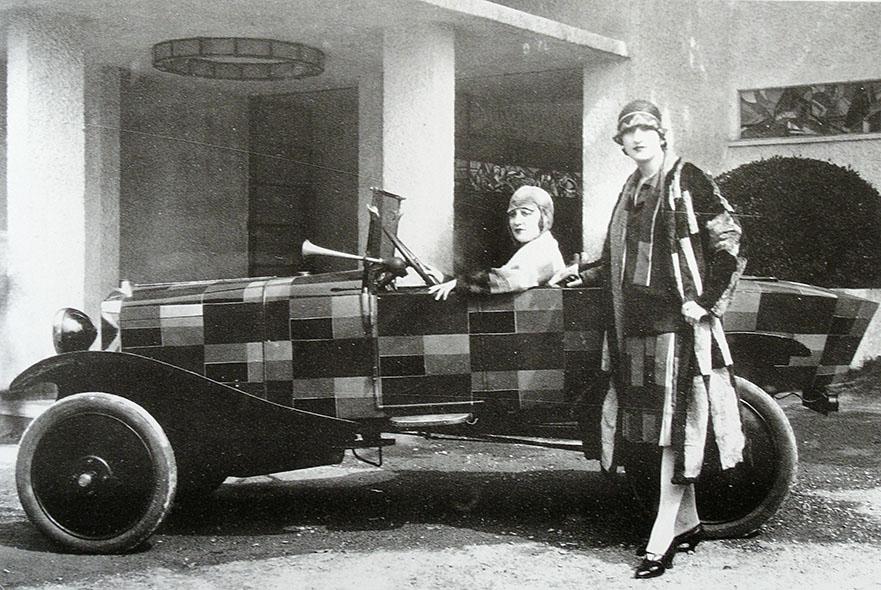


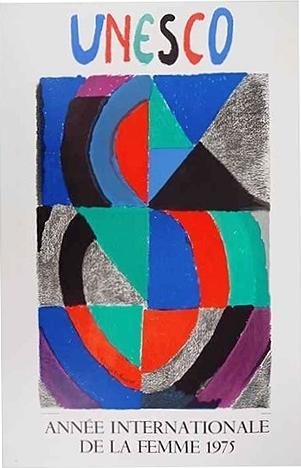

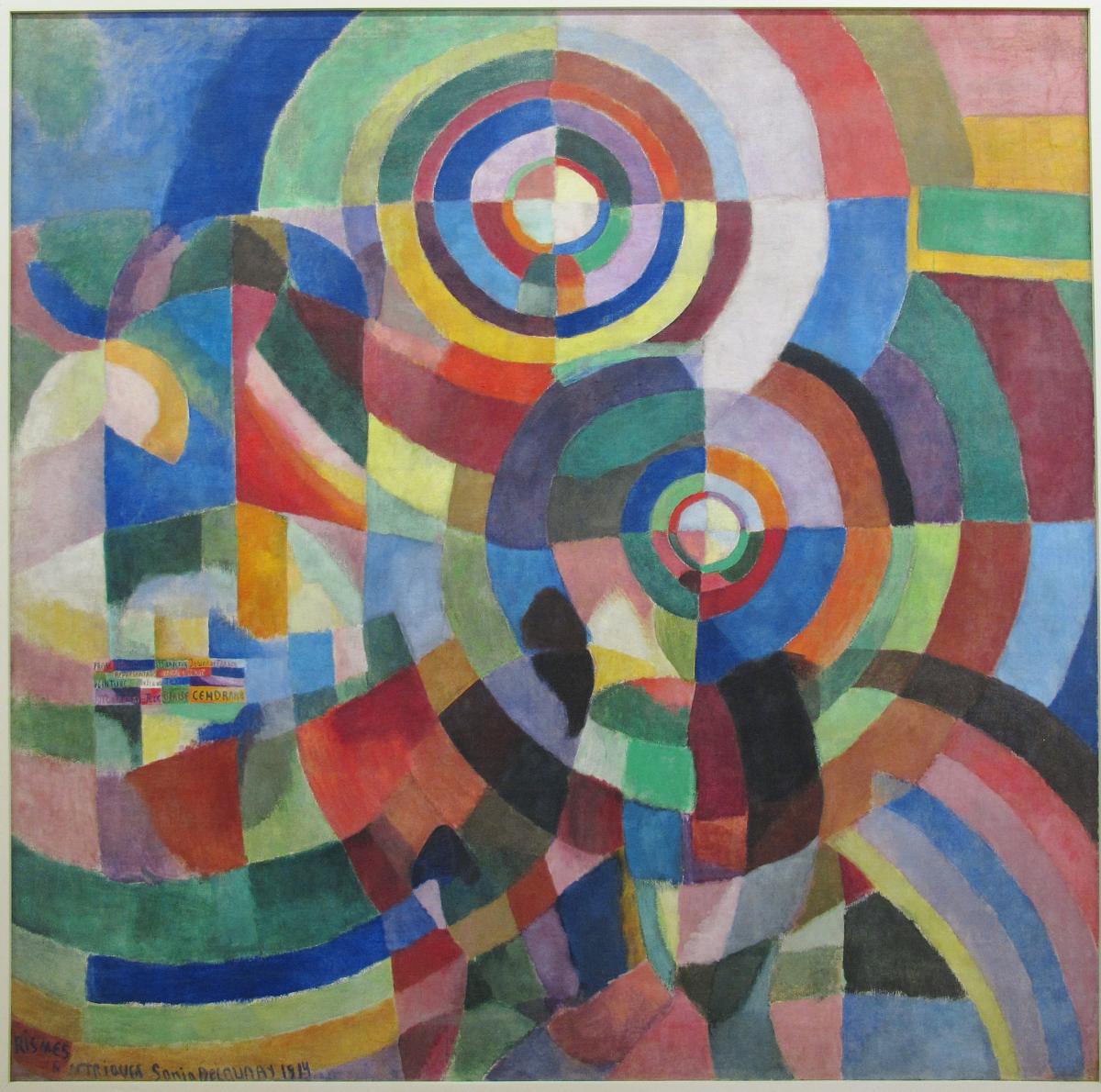
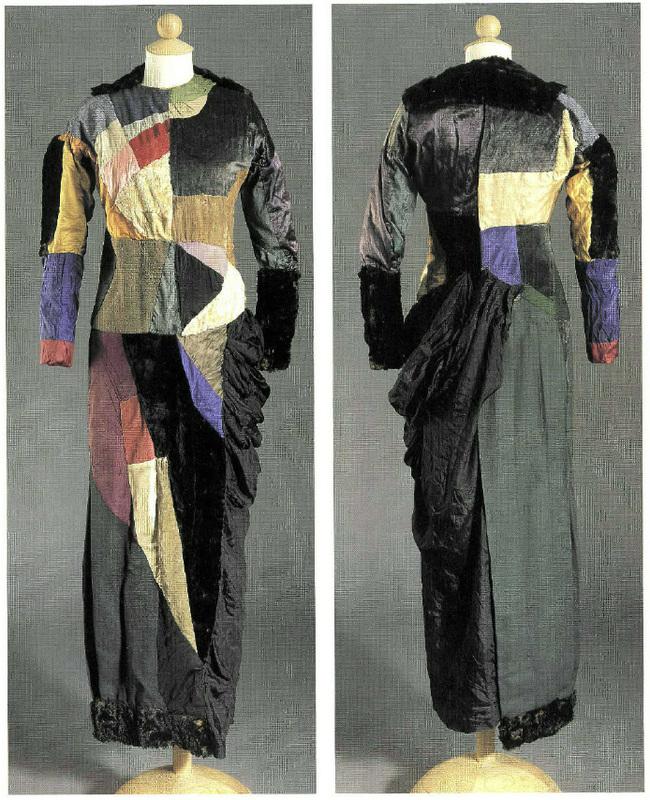
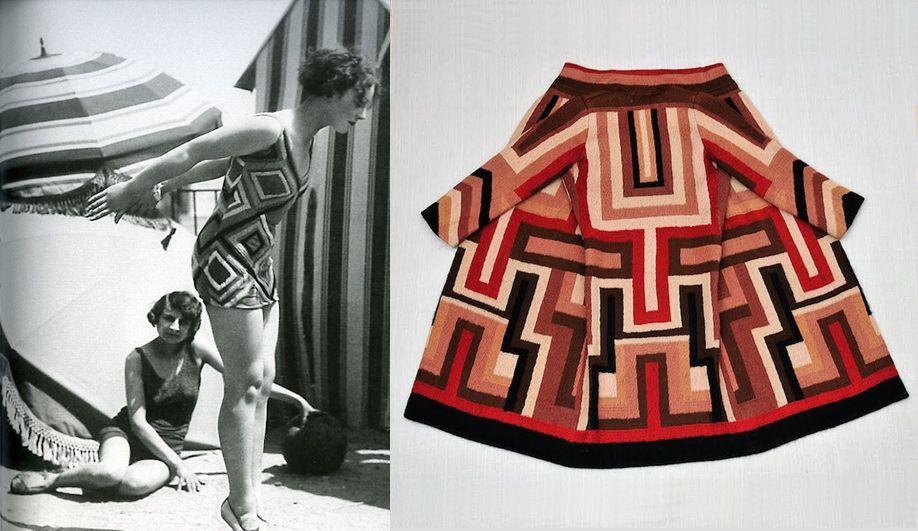

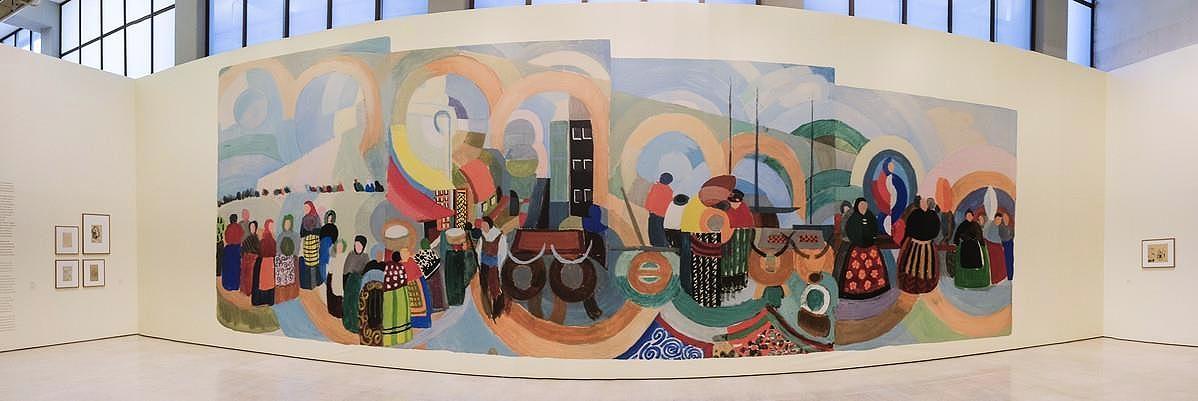
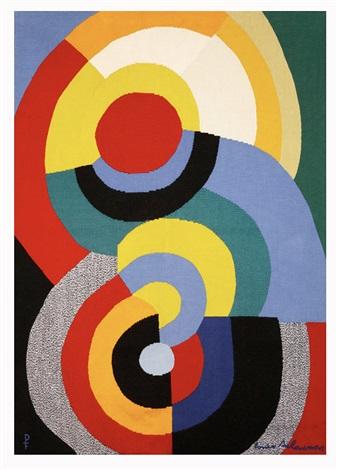
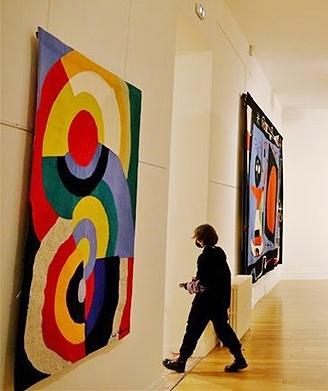
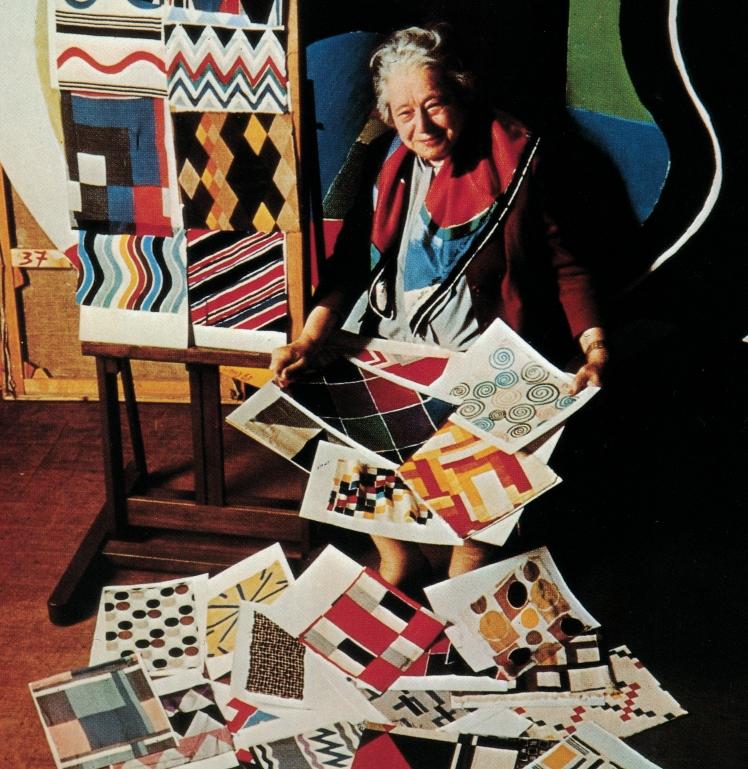
Write a Letter to the Editor on this Article
We encourage readers to offer their point of view on this article by submitting the following form. Editing is sometimes necessary and is done at the discretion of the editorial staff.